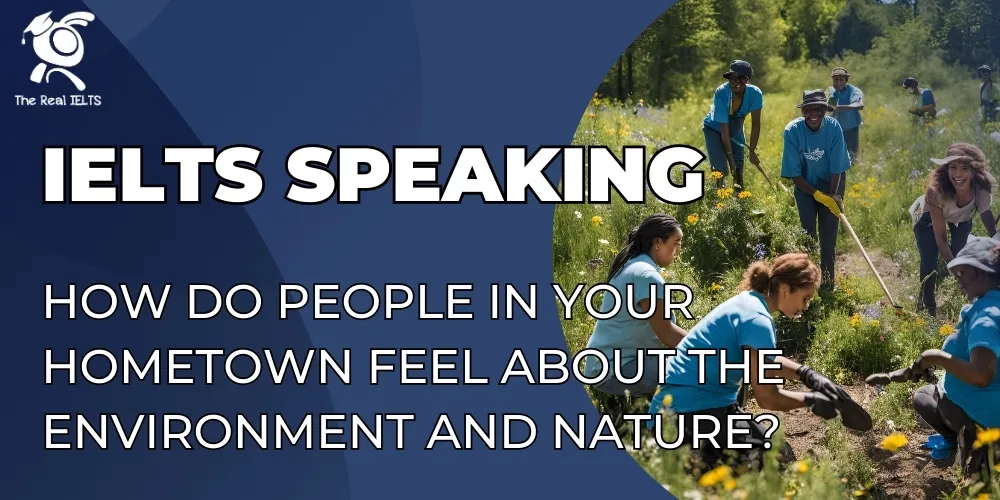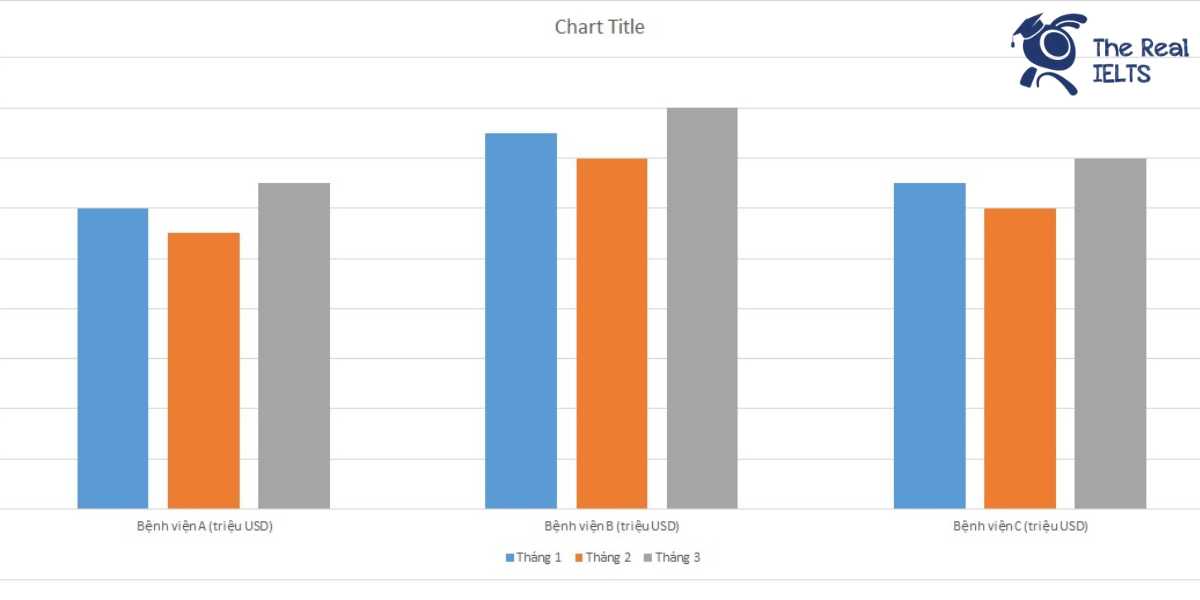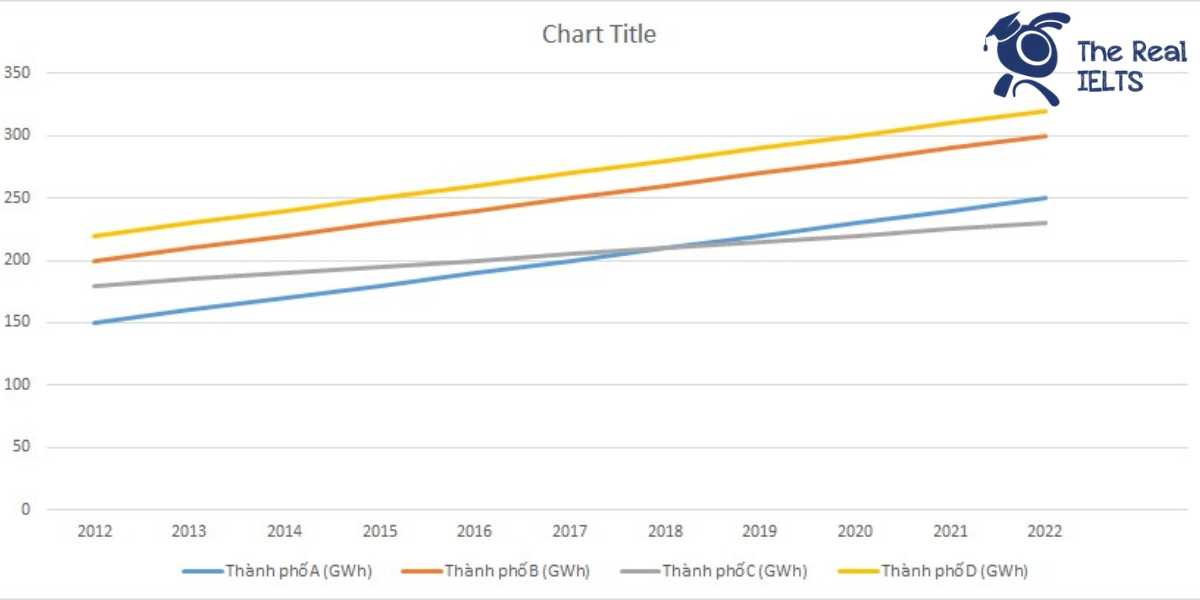Trong bài viết IELTS Speaking này, chúng ta sẽ tìm hiểu cách người dân quê hương đánh giá và quan tâm đến môi trường, từ các chiến dịch bảo vệ thiên nhiên đến ý thức sống xanh.
Đọc thêm các bài luyện thi IELTS khác.
Đọc thêm câu hỏi khác tại: IELTS Speaking Part 1: Introduction and Interview chủ đề Your hometown.
Đọc thêm: IELTS Speaking: Do people in your hometown like to shop online or in stores?
Câu trả lời cho IELTS Speaking: How do people in your hometown feel about the environment and nature?
Ví dụ 1
Introduction:
People in my hometown have a deep connection with the environment and nature, largely because our city is surrounded by beautiful landscapes, such as rivers, mountains, and lush greenery. Over the years, I’ve noticed that the attitude toward the environment has evolved, especially as awareness of global issues like climate change and pollution has grown. While some people are very proactive in protecting nature, others are still in the process of understanding its importance.
Main Body 1: Positive Attitudes and Actions
Many people in my hometown, especially the younger generation, are quite passionate about environmental conservation. For example, it’s common to see community clean-up drives organized by local schools or NGOs, where volunteers gather to pick up litter from parks and riversides. Additionally, there’s a growing trend of using eco-friendly products, such as reusable bags and bamboo straws, which shows that people are becoming more conscious of their impact on the planet. Some neighborhoods have even started urban gardening projects, where residents grow their own vegetables and flowers, creating a greener and more sustainable environment.
Main Body 2: Challenges and Indifference
However, not everyone is equally concerned about the environment. Some older generations, for instance, tend to prioritize economic development over environmental protection. They might view industrial growth as more important than preserving natural resources. I’ve also noticed that littering is still a problem in certain areas, particularly in public spaces like bus stations or markets. This suggests that while awareness is increasing, there’s still a need for more education and stricter regulations to encourage better habits.
Main Body 3: Personal Reflection and Future Outlook
Personally, I feel proud of the steps my community has taken to protect the environment, but I also believe there’s room for improvement. For instance, I think the local government could invest more in renewable energy projects, like solar panels, and promote public transportation to reduce carbon emissions. At the same time, I’m hopeful because I’ve seen how small actions, like recycling or planting trees, can inspire others to do the same. If this momentum continues, I believe my hometown can become a model for sustainable living in the future.
Conclusion:
In conclusion, people in my hometown have a mixed but evolving relationship with the environment. While some are actively working to protect nature, others are still learning to appreciate its value. With continued efforts and education, I’m confident that our community will grow even more environmentally conscious in the years to come.
Ví dụ 2
Introduction:
In my hometown, people’s feelings about the environment and nature are quite diverse, depending on their age, lifestyle, and exposure to environmental issues. While some are deeply committed to preserving nature, others are less aware of its importance. Overall, though, I’d say there’s a growing sense of responsibility toward the environment, especially among younger generations.
Main Body 1: Connection to Nature
My hometown is blessed with natural beauty—rolling hills, pristine lakes, and dense forests—so many people feel a strong connection to nature. For example, it’s common for families to spend weekends hiking, camping, or simply enjoying picnics in the countryside. This closeness to nature has fostered a sense of appreciation and respect for the environment. Many locals take pride in keeping these areas clean and often participate in tree-planting events or wildlife conservation projects.
Main Body 2: Environmental Challenges
Despite this appreciation, there are still challenges. Rapid urbanization has led to deforestation and pollution in some areas. For instance, the construction of new housing developments has encroached on green spaces, which has sparked debates about balancing progress with environmental preservation. Additionally, air pollution from vehicles and factories is a growing concern, especially in the city center. Some people feel helpless about these issues, while others are actively advocating for change, such as pushing for stricter environmental policies or promoting the use of electric vehicles.
Main Body 3: Changing Attitudes and Initiatives
What gives me hope is the shift in attitudes I’ve observed over the past few years. Schools are now incorporating environmental education into their curricula, teaching students about recycling, energy conservation, and the importance of biodiversity. Local businesses are also joining the movement by adopting sustainable practices, like reducing plastic waste or using renewable energy sources. For example, a popular café in my hometown recently switched to biodegradable packaging, and it’s been well-received by customers.
Personal Reflection and Future Outlook
From my perspective, I think my hometown is moving in the right direction, but there’s still a lot of work to be done. Personally, I try to do my part by reducing waste, using public transportation, and supporting local environmental initiatives. I believe that if everyone takes small steps, we can make a big difference. Looking ahead, I hope to see more collaboration between the government, businesses, and citizens to create a greener and more sustainable future for our community.
Conclusion:
To sum up, people in my hometown have a complex relationship with the environment. While some are deeply connected to nature and actively work to protect it, others are still catching up. However, with increasing awareness and collective efforts, I’m optimistic that we’ll continue to make progress in preserving the natural beauty of our hometown for future generations.
Ví dụ 3
Introduction:
In my hometown, the environment and nature hold a special place in people’s hearts, largely because of our cultural heritage and traditional way of life. Many locals view nature not just as a resource but as an integral part of our identity. However, like many places around the world, we face challenges in balancing modern development with environmental preservation.
Main Body 1: Cultural Connection to Nature
One of the most striking aspects of my hometown is how deeply rooted our traditions are in nature. For example, many festivals and ceremonies are tied to the seasons, such as harvest festivals in the autumn or water-related rituals during the rainy season. These traditions reflect a deep respect for the natural world and its cycles. Additionally, older generations often pass down stories and practices that emphasize living in harmony with nature, like using herbal remedies or practicing sustainable farming techniques. This cultural connection has instilled a sense of responsibility in many people to protect the environment.
Main Body 2: Modern Challenges and Awareness
However, as my hometown has modernized, some of these traditional practices have been overshadowed by industrialization and urbanization. For instance, the construction of new factories and roads has led to deforestation and pollution in certain areas. This has sparked concern among many residents, especially younger people who are more aware of global environmental issues like climate change and plastic pollution. In response, there’s been a rise in grassroots movements, such as beach clean-ups and campaigns to reduce single-use plastics. Social media has also played a big role in spreading awareness and encouraging people to take action.
Main Body 3: Community Efforts and Personal Involvement
What I find inspiring is how the community has come together to address these challenges. For example, local schools often organize field trips to nature reserves or recycling centers to teach students about environmental conservation. There’s also a growing trend of eco-tourism, where visitors are encouraged to explore the natural beauty of our region while minimizing their environmental impact. Personally, I’ve been involved in a few initiatives, such as planting trees in my neighborhood and participating in workshops on sustainable living. These experiences have made me realize that even small actions can have a big impact when done collectively.
Future Outlook and Hope
Looking ahead, I believe my hometown has the potential to become a leader in environmental sustainability. With its rich cultural heritage and growing awareness, there’s a strong foundation for building a greener future. I hope to see more investment in renewable energy, better waste management systems, and stronger policies to protect natural habitats. At the same time, I think it’s important to preserve the traditional knowledge and practices that have allowed us to live in harmony with nature for generations.
Conclusion:
In conclusion, people in my hometown have a unique relationship with the environment, shaped by both cultural traditions and modern challenges. While there’s still much to be done to address environmental issues, I’m encouraged by the growing awareness and collective efforts to protect our natural heritage. By combining traditional wisdom with innovative solutions, I believe we can create a sustainable future for our community.
Ví dụ 4
Introduction:
In my hometown, people’s attitudes toward the environment and nature are shaped by a combination of economic needs, practical considerations, and growing awareness of global environmental issues. While some prioritize economic development, others are increasingly recognizing the importance of sustainability. This creates a dynamic and sometimes conflicting relationship with the environment.
Main Body 1: Economic Dependence on Natural Resources
My hometown has a strong economic dependence on natural resources, particularly agriculture and fishing. Many families rely on farming or fishing for their livelihoods, so they have a direct connection to the land and water. For example, during the harvest season, the entire community comes together to celebrate the fruits of their labor, which fosters a sense of gratitude and respect for nature. However, this dependence also means that environmental changes, such as droughts or water pollution, can have a significant impact on people’s lives. As a result, there’s a growing awareness of the need to protect these resources for future generations.
Main Body 2: Urbanization and Environmental Challenges
On the other hand, rapid urbanization has brought new challenges. As more people move to the city in search of better opportunities, there’s been an increase in waste generation, traffic congestion, and air pollution. For instance, the river that runs through my hometown, which was once clean and vibrant, is now polluted with plastic waste and industrial runoff. This has led to frustration among residents who remember how things used to be. Some people blame the government for not enforcing environmental regulations, while others feel that individuals need to take more responsibility for their actions.
Main Body 3: Grassroots Efforts and Changing Mindsets
Despite these challenges, I’ve noticed a positive shift in attitudes, particularly among younger people. There’s a growing interest in sustainable practices, such as recycling, composting, and using public transportation. Local NGOs and community groups have also been instrumental in driving change. For example, a recent campaign to clean up the river attracted hundreds of volunteers, including students, professionals, and even elderly residents. This shows that people are willing to take action when they see the impact of their efforts. Additionally, some businesses are starting to adopt eco-friendly practices, such as reducing plastic packaging or sourcing materials locally.
Personal Reflection and Future Outlook
Personally, I feel that my hometown is at a crossroads. On one hand, there’s a strong desire for economic growth and development, which sometimes comes at the expense of the environment. On the other hand, there’s a growing recognition that sustainability is essential for long-term prosperity. I believe that education and awareness are key to bridging this gap. For instance, schools could teach students about the importance of environmental conservation, and the government could provide incentives for businesses to adopt green practices. If we can strike a balance between development and sustainability, I’m confident that my hometown can thrive while preserving its natural beauty.
Conclusion:
In conclusion, people in my hometown have a complex relationship with the environment, shaped by economic needs, urbanization, and changing attitudes. While there are challenges, there’s also a growing sense of responsibility and a willingness to take action. By working together and prioritizing sustainability, I believe we can create a brighter future for our community and the planet.















